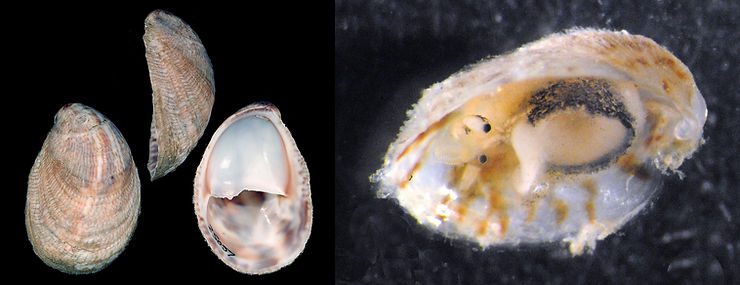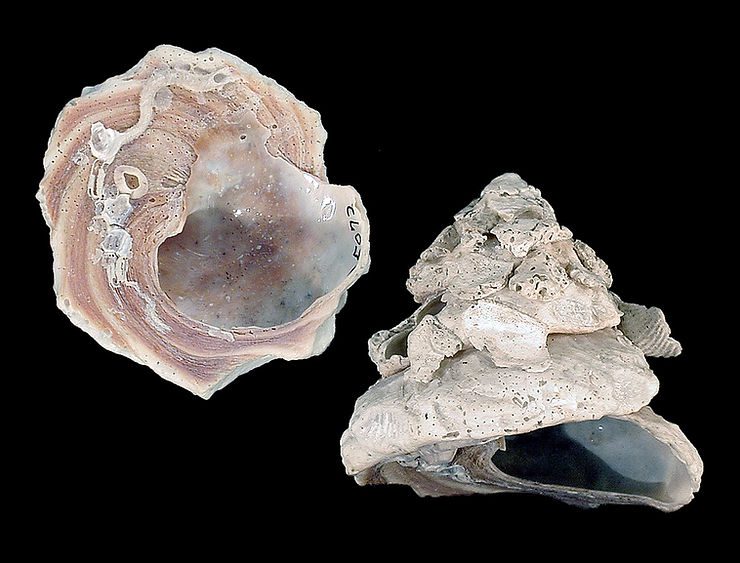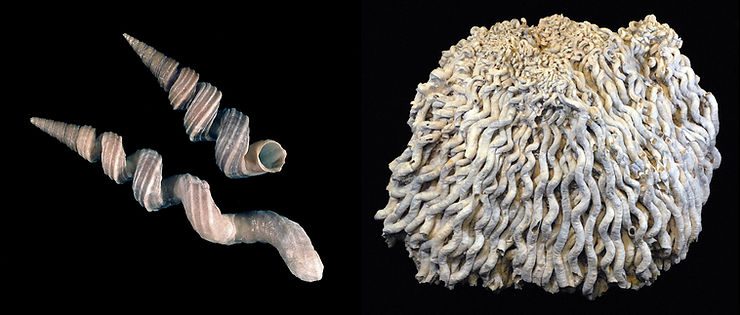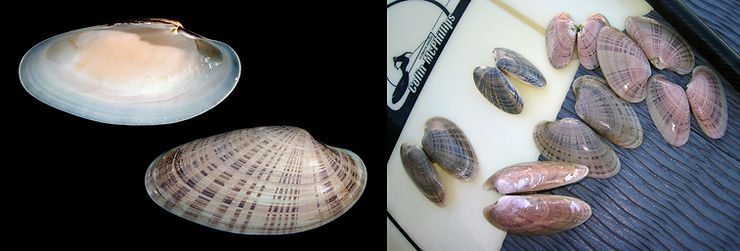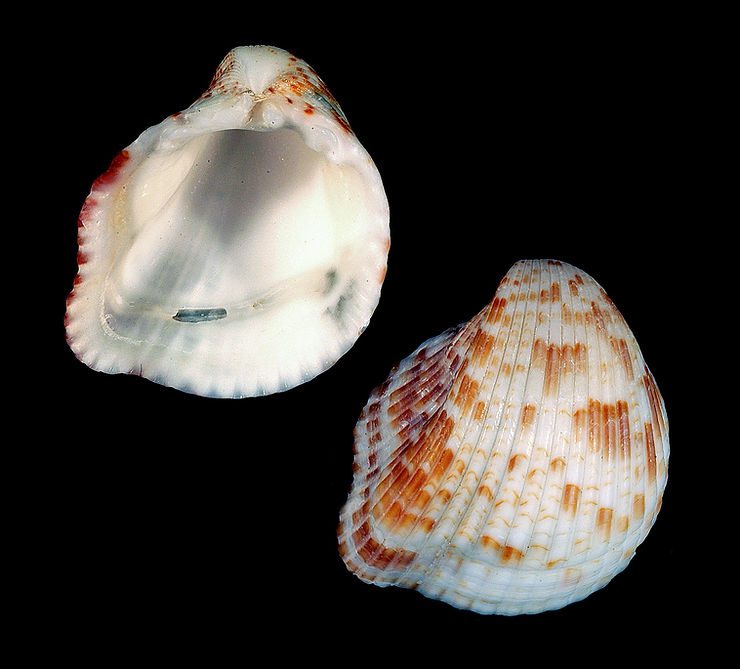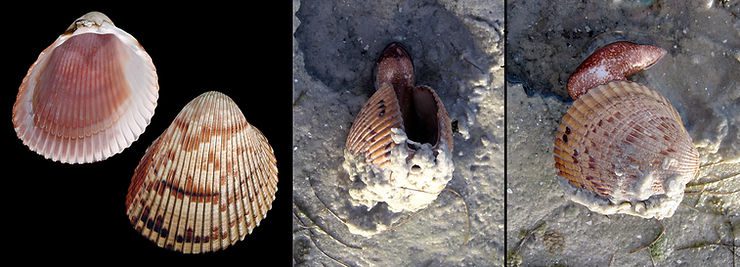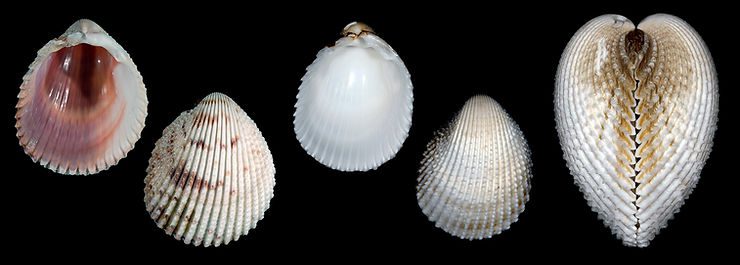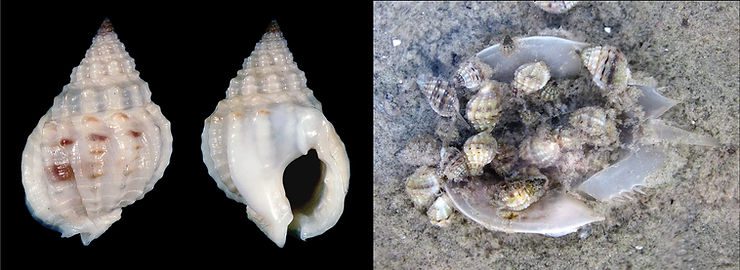
The Bruised Nassa
The Bruised Nassa, Nassarius vibex (Say, 1822), is a denizen of the mud flats and back-bays of Southwest Florida and other areas of the tropical western Atlantic. Its shell, measuring about 0.5 inch, is extremely variable, but typical of the species is the relatively broad shield that surrounds the shell opening, or aperture. Bruised Nassas are scavengers, feeding on the decaying corpses of other marine animals, including fish, horse crabs, crabs and other crustaceans, to name just a few. [The s
